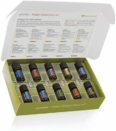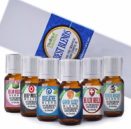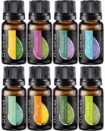Essential oils are useful gifts from nature that can be more powerful than expected. However, not everyone knows how to use them properly to their full potential. Here, we have compiled a helpful safety guide, describing the basics of essential oil, its uses, and other valuable information.
What is Essential Oil?
Essential oils are highly concentrated natural extracts derived from leaves, flowers, and stems of plants. The most common way to use essential oils is to inhale them, both for their therapeutic properties and their fantastic scents.
How Can I Use Essential Oils?
Essential oils have a wide array of uses due to their medicinal and therapeutic properties. Their antibacterial, antifungal, and antiviral properties make them an excellent addition to the medicine cabinet. They’ve also been proven to promote healthy sleep, relieve headaches, and alleviate pain. Essential oils can also encourage healthy digestion and can help to treat the common cold. They can even be used in diffusers and humidifiers, as well as diluted with a carrier oil and applied to the skin.
How Often Can Essential Oils Be Applied?
Whenever using essential oils, it’s best to follow the proper usage instructions printed on each essential oil label. Essential oils are potent, so it’s recommended to start with low quantities slowly. Excessive use of essential oils may increase the risk of adverse reactions. In most cases, 1-2 drops are adequate, and using any more may waste product. Depending on the essential oil you’re using, you can gradually build up to 3-4 uses per day if needed.
What is “Hot Oil”?
These are a type of oil that can cause a hot or warming sensation when applied to the skin. Some examples of hot oils and blends include Clove, Cinnamon, Lemongrass, Oregano, and others. There have been people who believe that Peppermint’s cooling sensation can be too intense. It’s best to use a patch test first before using any hot oils. To do a patch test, apply 1-2 drops of essential oil to a patch of skin (the forearm is a good option.) Then observe that area of the skin for the next 1-2 hours for any noticeable reactions. However, any reaction would usually occur within 5-10 minutes. If you experience a hot or burning sensation or develop a rash, add V-6 or another carrier oil to the affected area as often as needed.
Can Essential Oils Be Applied To Sensitive Areas?
When using essential oils, avoid contact with sensitive areas such as eyes, ears, genitals, and mucous membranes. If you choose to use the oil in any sensitive areas, dilute one drop of the essential oil with 5-10 drops of V-6 or another carrier oil.





